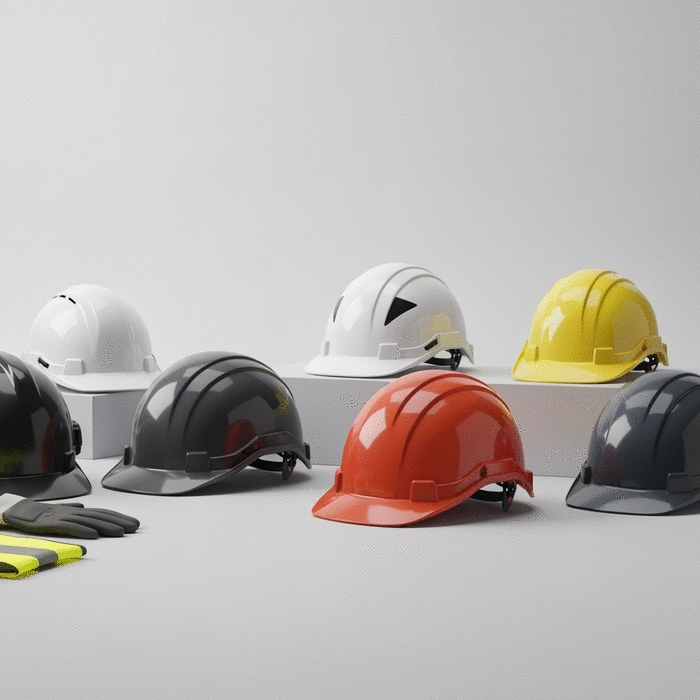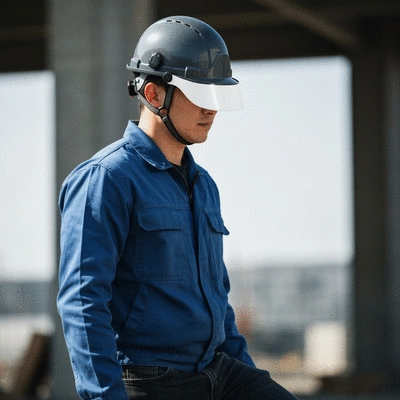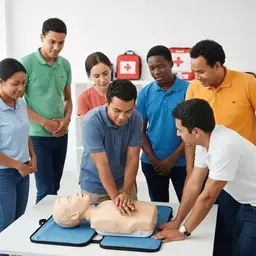Compliance with SANS Standards
- ✓ SANS 50365: Electrical Helmets
- ✓ SANS 1400: Industrial Helmets
- ✓ Regular updates & inspections
Join the OHS Hub South Africa community for essential safety insights, compliance tips, and product updates.
Posted on: 2025-11-17
By: Thandiwe Mokoena
Each year, thousands of workplace injuries occur due to inadequate safety measures. Ensuring your team wears the right safety helmets can be a game-changer in preventing these incidents. Let's examine some key insights that every business owner should know about safety helmets.
This visual summarizes key aspects of safety helmet compliance and maintenance, highlighting South African standards and practical care tips.
When it comes to workplace safety, understanding safety helmets is crucial for every business. In South Africa, safety helmets are not merely a requirement—they are a lifeline. These essential pieces of personal protective equipment (PPE) help protect workers from head injuries that can happen in various industries, from construction to mining. By ensuring your team is equipped with proper helmets, you foster a culture of safety that benefits everyone. For more insights on general workplace safety, consider our firefighting training basics in South Africa.
But what exactly qualifies a helmet as "safe"? This article will explore the various aspects of safety helmets, including their critical role in preventing injuries, the specific standards they must meet, and how to choose the right one for your work environment. Let’s dive into the details!
Safety helmets are designed to protect the head from falling objects, impacts, and electrical hazards. They are essential in preventing serious injuries, which could lead to long-term consequences for your workforce. In my years of experience with OHS Hub South Africa, I've seen firsthand how effective helmets can make a difference in accident prevention!
In essence, a good safety helmet can be the difference between a minor incident and a life-altering injury. This is why understanding the importance of safety helmets—and ensuring compliance with safety regulations—is vital for any business.
In South Africa, helmet safety standards are governed by the South African Bureau of Standards (SANS). These regulations ensure that helmets provide adequate protection and withstand specific impacts. Standards such as the SANS 50365 for electrical helmets and SANS 1400 for industrial helmets clearly outline the necessary criteria for safety helmets.
By adhering to these standards, businesses not only protect their employees but also mitigate legal risks associated with non-compliance. It’s important to regularly check that your safety gear meets these current standards to maintain a safe working environment. This due diligence is similar to ensuring all employees undergo workplace medicals in South Africa, which are crucial for overall employee well-being.
Impact resistance is one of the most vital features of a safety helmet. It refers to the helmet's ability to withstand a certain level of force without cracking or failing. This feature is critical in protecting workers from head injuries caused by falling objects or accidents on-site.
As a business owner, investing in helmets with high impact resistance not only safeguards your crew but also demonstrates your commitment to workplace safety. Remember, safety helmets are an investment in your team's well-being!
Did you know? Regular training sessions on helmet safety and maintenance can significantly improve your team's adherence to safety practices. Consider incorporating practical demonstrations during these sessions to ensure everyone understands the importance of proper helmet use and care. A well-informed workforce is a safer workforce!
Just like any equipment, proper maintenance of your safety helmet is crucial for ensuring its longevity and effectiveness. Helmets can take a beating on the job, but with the right care, you can extend their lifespan significantly. At OHS Hub South Africa, we believe that proactive maintenance is key to keeping your team safe!
Here are some essential care and maintenance guidelines to help you keep your safety helmets in top shape:
By following these steps, you can ensure that your helmet remains functional and compliant with safety standards. Remember, a well-maintained helmet can be the difference between safety and accidents on the job.
Knowing when to replace your safety helmet is just as critical as maintaining it. Over time, exposure to environmental factors and wear and tear can compromise the integrity of your helmet. At OHS Hub South Africa, we stress the importance of being vigilant about helmet condition!
Here are some guidelines for helmet replacement and safety compliance:
Staying on top of these maintenance and replacement guidelines ensures maximum safety for your workers. Regular inspections and being mindful of your helmet's condition will help you stay compliant with regulations while protecting your team effectively. For more details on maintaining workplace safety standards, you might also be interested in how to obtain a fitness certificate for work.
Safety helmets primarily protect against falling objects, impacts, and electrical hazards, significantly reducing the risk of serious head injuries in the workplace.
In South Africa, safety helmets must comply with South African Bureau of Standards (SANS) regulations, such as SANS 50365 for electrical helmets and SANS 1400 for industrial helmets.
Safety helmets should be inspected regularly, ideally before each use, for any signs of damage like cracks, dents, or worn-out padding. Regular inspections ensure their continued effectiveness.
A safety helmet should be replaced if it has visible damage (cracks, deep scratches, dents), after any significant impact (even without visible damage), or every 3-5 years according to manufacturer recommendations, or if the internal padding/suspension is worn out.
To maintain a safety helmet, store it in a cool, dry place away from direct sunlight, clean it regularly with mild soap and water, inspect it for damage before each use, and avoid using harsh chemicals or solvents.
In summary, understanding how to maintain and recognize when to replace your safety helmet is vital for ensuring workplace safety. With frequent checks and proper care, you can enhance the lifespan of your helmet significantly. Remember to follow the guidelines we discussed to keep your helmets in optimal condition!
At OHS Hub South Africa, we encourage you to adopt safe practices and invest in quality safety gear. When selecting helmets, choose reputable brands and ensure compliance with local regulations. Together, let’s foster a culture of safety that prioritizes both compliance and the well-being of all workers!
Here is a quick recap of the important points discussed in the article:



 How often do you consider the vital role that PPE gloves play in workplace safety? In industries ran
How often do you consider the vital role that PPE gloves play in workplace safety? In industries ran
 Are you aware that first aid training can be the difference between life and death in emergencies? U
Are you aware that first aid training can be the difference between life and death in emergencies? U
 As workplace safety becomes increasingly critical, understanding the role of drug screening can lead
As workplace safety becomes increasingly critical, understanding the role of drug screening can lead